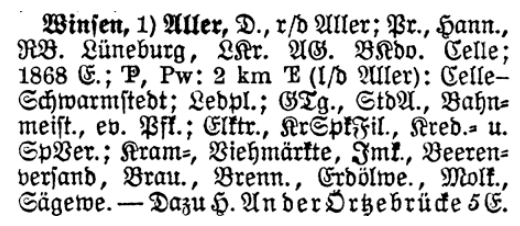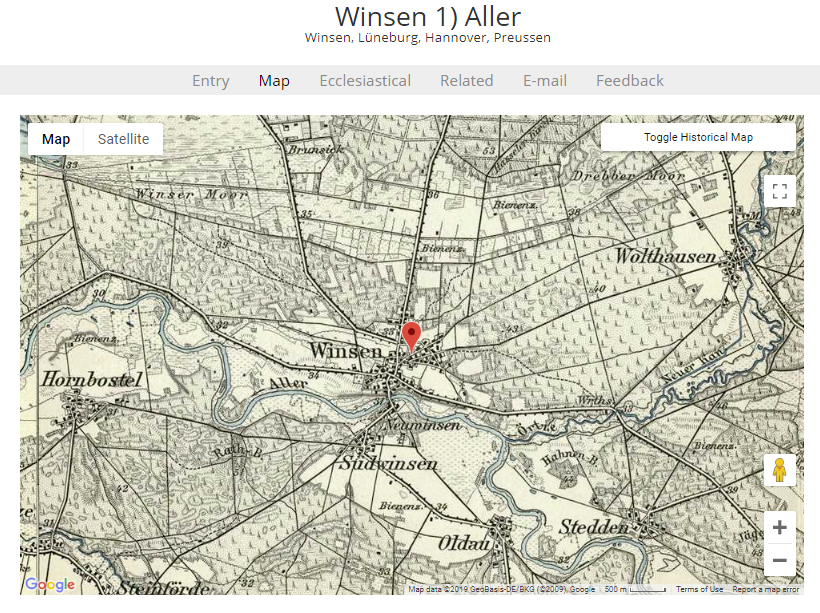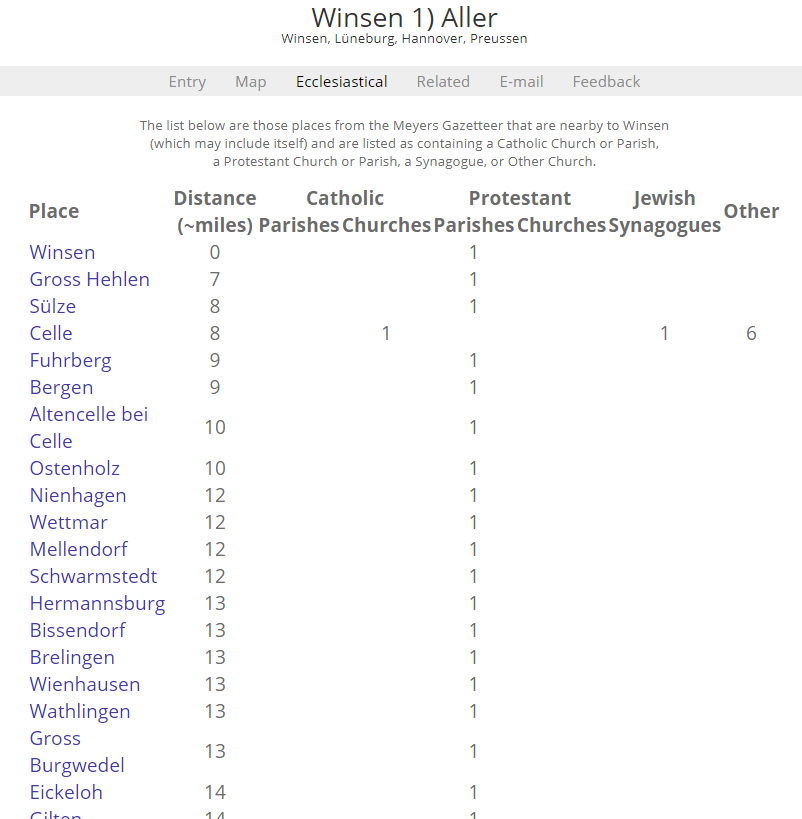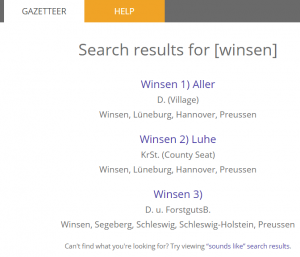German Genealogy Research: Meyers Gazetteer
Finding the place after you’ve found the place
A tricky aspect of German genealogy is locating your ancestor’s hometown and figuring out where to look for more records. Gazetteers help us on our way to find more records about our ancestors.
What is Meyers Gazetteer?
A gazetteer is a dictionary of place names. Meyers Orts- und Verkehrs-Lexikon des Deutschen Reichs (Meyers Gazetteer for short) lists places that existed in the German Empire from 1871 to 1912. If you know the name of your ancestor’s hometown in Germany, Meyers can help you figure out where to look for records about your ancestor.
Meyers lists every city, town, hamlet, village and backwater of pre-World War I Germany along with interesting but heavily abbreviated details about each place. Meyers was printed in German using the blackletter Fraktur typeface, a script very foreign to most U.S. readers (see example in Fig. 1 below).
Why Use Meyers Gazetteer?
Meyers can show you where to look for records about your ancestor! After civil registration began in Germany , vital events (births, marriages and deaths) were recorded by the Standesamt — the civil registry office. Before civil registration, local parishes and rabbinates were official government recordkeepers. Larger towns had one or more civil registry offices, parishes, or rabbinates. Smaller towns and villages without a registry office, parish, or rabbinate were covered by one located in a larger nearby town. Meyers Gazetteer tells us about about civil registration jurisdictions and provides ecclesiastical information which leads you to your ancestor’s vital records.
Where do I find Meyers Gazetteer?
The best and most user-friendly version of Meyers Gazetteer is currently available at www.meyersgaz.org. Originally printed in the difficult pre-1941 German Fraktur typeface, the authors at www.meyersgaz.org converted the important parts of each of the over 200,000 entries to our familiar Roman alphabet and translated those vital portions into plain English!!! Essentially, they’ve turned important details from this entry:
Fig. 1: Example entry from Meyers Gazetteer for Winsen an der Aller; image courtesy of www.meyersgaz.org
into this:
Fig. 2: Extract of genealogically relevant info about Winsen an der Aller; image courtesy of www.meyersgaz.org
Enhanced with beautiful digitally scanned historical maps, ecclesiastical data, and town lists to aid in radial searches, town entries in this web iteration are very fun and very useful.
Fig. 3: Full color historical map of Winsen an der Aller, integrated with Google’s digital mapping technology; image courtesy of www.meyersgaz.org
Fig. 4: List of towns near Winsen an der Aller, Germany, showing their distance from Winsen as well as numbers and types of religious congregations in each; images courtesy of www.meyersgaz.org
Especially helpful is the “Ecclesiastical” tab (shown above), which gives a list of locations within a twenty-mile radius of your town as well as a tally of religious congregations located in each town on the list (Roman Catholic and Protestant parishes, Jewish synagogues and so forth).
No subscription or registration is required to access this handsome and valuable resource.
When and How Should I use Meyers Gazetteer?
Use Meyers Gazetteer when you think you know the specific place your ancestor came from. You may also search using the first few letters of a place name (Wins, for Winsen), or using the wildcard asterisk “*” in place of one or more letters at the beginning or in the middle of a place name (W*sen, or *nsen for Winsen). “The Homepage: Search the Meyers Gazetteer” heading on www.meyersgaz.org’s “Help” tab describes these strategies. (Click through on the link above for further explanation.) At the bottom of your search results, or in the case of no search matches, you may also click a “sounds like” option at the bottom of the page.
Fig. 5: “Sounds like” option returns results that may sound like your place name, based on data you put in
Knowing the kingdom or state where your hometown lies is helpful. There were many towns in different parts of the German Empire with the same name (see case in Fig. 6 below). The gazetteer will give you the information for each match. Knowing the city’s kingdom or state may save you searching other towns of the same name for your ancestor’s records.
Fig. 6: Search results returned when searching “Winsen” at www.meyersgaz.org; note that two “Winsens” existed in the same governmental Regierungsbezirk and a third marked a forest
Conclusion
Meyers Gazetteer and www.meyersgaz.org are excellent resources to use when you are researching a person from Germany. They help identify records and jurisdictions for German towns – small and large – and give us clues as to where specific records can be located. Finding your ancestor’s hometown in Meyers Gazetteer is one more important step to learning more about your ancestry, family history and genealogy. For more information, tips, links and free consultations, fill out our contact form at www.LostGenerationsGenealogy.com.
Lost Generations Genealogy is dedicated to helping as many people as possible learn about their ancestry, family history and genealogy. They offer a free library of genealogy self-help articles, tips and links (work in progress), free consultations, and professional research services. Give us a call, visit our website, or drop us an email at www.LostGenerationsGenealogy.com. Find us on Facebook at www.facebook.com/LostGenerations/






